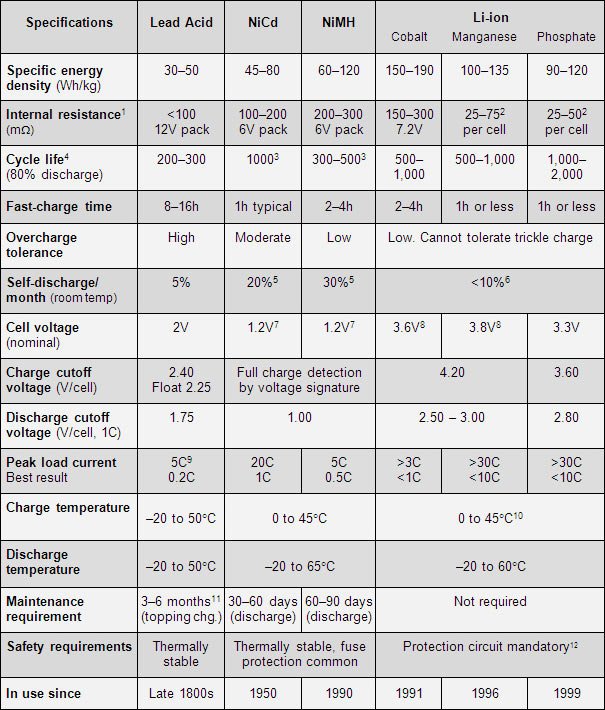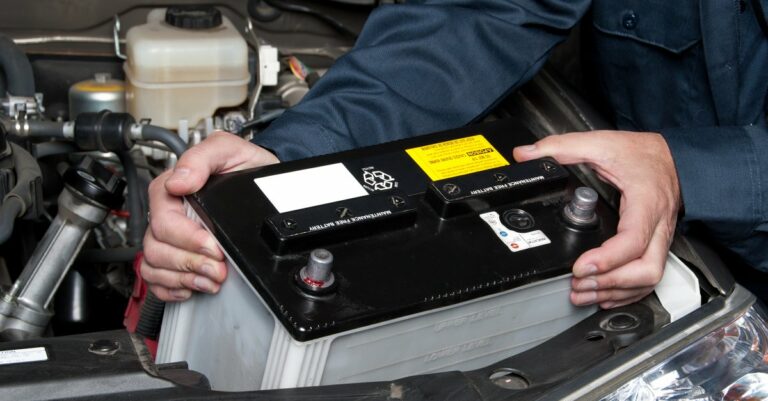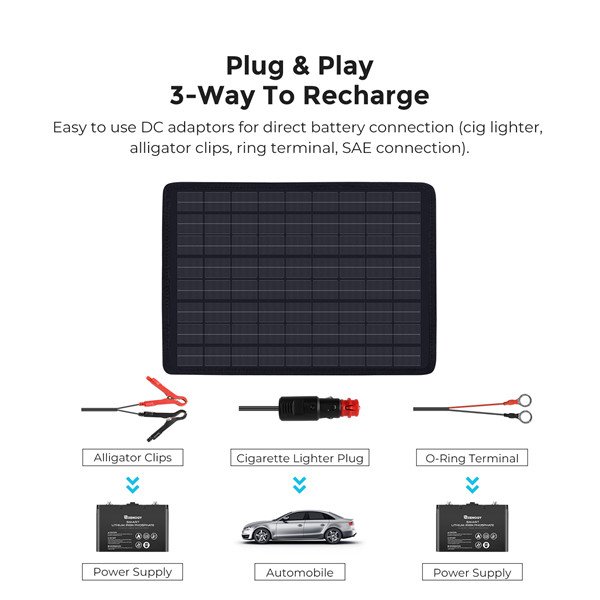Understanding Car Battery Sizes And Types: A Comprehensive Guide
Looking for answers about car battery sizes and types? You’re in the right place! Understanding the various sizes and types of car batteries is crucial to ensure the optimal performance of your vehicle. Whether you’re a car enthusiast or simply want to make an informed decision when it comes to replacing your car battery, this article will provide you with all the information you need. So, let’s dive right in and explore the world of car battery sizes and types.
Car Battery Sizes and Types?
1. Understanding the Importance of Car Batteries
Car batteries play a crucial role in powering your vehicle, providing the necessary electrical energy to start the engine, power the lights, infotainment system, and other essential components. Choosing the right car battery size and type is essential for ensuring optimal performance and avoiding potential issues on the road.
1.1 Why Is Choosing the Right Car Battery Important?
Selecting the correct car battery size and type is crucial for several reasons:
– Performance: The appropriate battery size and type will provide the necessary power to start your vehicle reliably, regardless of weather conditions.
– Compatibility: Different car models require batteries with specific dimensions and electrical specifications in order to fit perfectly and function correctly within the battery tray.
– Longevity: By choosing the right battery, you can ensure its longevity and minimize the risk of premature failure, saving you time and money in the long run.
2. Understanding Car Battery Sizes
Car batteries come in various sizes, commonly referred to as group sizes or BCI sizes. These sizes denote specific dimensions and are created to fit different vehicles. It’s important to know the size that corresponds to your car to ensure a proper fit.
2.1 Common Car Battery Sizes
There are several common car battery sizes available, including:
– Group 24: This size is commonly found in mid-sized sedans and small trucks.
– Group 35: Typically used in compact cars and some small SUVs.
– Group 47: Found in certain Volkswagen and Audi models.
– Group 48: Commonly used in vehicles with higher electrical demands, such as larger sedans, SUVs, and trucks.
– Group 49: Used in many late-model luxury vehicles.
– Group 51R: Frequently found in Honda and Acura vehicles.
– Group 65: Commonly used in larger vehicles, such as SUVs, RVs, and trucks.
2.2 Determining the Correct Car Battery Size for Your Vehicle
To determine the appropriate battery size for your vehicle, you can follow these steps:
1. Consult your vehicle’s manual: The manual will often include the recommended battery size or group number.
2. Check the existing battery: If you have the original battery installed, you can find the group size information on the label.
It’s important to note that certain vehicles may have more than one battery size option, depending on the model and optional features. In such cases, it’s best to consult with a professional or refer to the vehicle manufacturer’s specifications.
3. Understanding Car Battery Types
Car batteries are available in different types, each with its own advantages and disadvantages. Understanding these types will help you make an informed decision when choosing the ideal battery for your vehicle.
3.1 Lead-Acid Batteries
Lead-acid batteries have been the most commonly used type for decades. They consist of lead plates submerged in an electrolyte solution, generating electrical current through a chemical reaction.
Advantages of lead-acid batteries include:
– Affordability: Lead-acid batteries are generally more affordable compared to other battery types.
– Availability: These batteries are widely available in various sizes and types.
– Starting power: Lead-acid batteries provide high starting power, making them suitable for most vehicles.
However, lead-acid batteries also have some disadvantages:
– Maintenance: They require regular maintenance, including checking fluid levels and ensuring proper charging.
– Shorter lifespan: On average, lead-acid batteries have a shorter lifespan compared to other battery types.
– Limited deep cycle capabilities: They are not designed for repeated deep discharges, which can negatively impact their overall lifespan.
3.2 Absorbent Glass Mat (AGM) Batteries
AGM batteries are an advanced type of lead-acid battery that offers several advantages over traditional flooded lead-acid batteries. They use a unique design that immobilizes the electrolyte solution, preventing leakage and enabling higher performance.
Advantages of AGM batteries include:
– Maintenance-free: They do not require regular maintenance or fluid level checks.
– Vibration resistance: AGM batteries are more resistant to vibrations, making them suitable for off-road and high-performance vehicles.
– Deep cycle capabilities: They can handle repeated deep discharges without compromising performance.
However, AGM batteries also have some considerations:
– Higher cost: AGM batteries are generally more expensive compared to traditional lead-acid batteries.
– Sensitivity to overcharging: Overcharging can permanently damage the battery, requiring careful charging practices.
3.3 Lithium-Ion Batteries
Lithium-ion batteries, commonly known for their use in electronic devices, are also becoming more prevalent in the automotive industry. These batteries offer numerous advantages, including lightweight construction and high energy density.
Advantages of lithium-ion batteries include:
– Lightweight: They weigh significantly less than lead-acid batteries, contributing to overall vehicle weight reduction.
– Longer lifespan: Lithium-ion batteries generally have a longer lifespan compared to lead-acid batteries.
– High energy density: They provide more power for their size, making them suitable for electric vehicles and hybrid cars.
However, there are some considerations with lithium-ion batteries:
– Higher cost: They are more expensive compared to traditional lead-acid batteries.
– Charging requirements: Specialized charging equipment is often necessary for lithium-ion batteries.
– Thermal sensitivity: Extreme temperatures can affect their performance and lifespan.
4. Choosing the Right Car Battery for Your Vehicle
When selecting a car battery, it’s important to consider various factors to ensure compatibility and optimal performance. Some key considerations include:
4.1 Vehicle Specifications
Consider your vehicle’s make, model, and year to determine the suitable battery size and type recommended by the manufacturer. Some vehicles have specific requirements due to their electrical systems or optional features.
4.2 Environmental Conditions
If you live in an area with extreme temperatures, such as very cold winters or scorching summers, it’s important to choose a battery that can withstand these conditions. Some batteries are designed to perform better in extreme temperatures.
4.3 Power Requirements
Consider the electrical demands of your vehicle, particularly if you have aftermarket accessories or a high-powered sound system. Ensure the battery you choose can provide sufficient power to meet these requirements.
4.4 Longevity and Warranty
Evaluate the expected lifespan of the battery and the warranty provided by the manufacturer. Longer-lasting batteries may have a higher upfront cost but can save you money in the long run.
4.5 Budget
Consider your budget when choosing a battery. While higher-quality batteries may have a higher price tag, they often offer better performance and longevity.
5. Maintaining and Caring for Your Car Battery
Once you have chosen and installed the right car battery, it’s important to maintain it properly to maximize its lifespan and performance.
5.1 Regular Inspection
Regularly inspect your battery for signs of corrosion, leaks, or damage. Clean any corrosion buildup on the terminals and ensure they are securely connected.
5.2 Proper Charging
If your battery requires charging, use a compatible battery charger and follow the manufacturer’s instructions. Overcharging or undercharging can affect the battery’s lifespan.
5.3 Safe Storage
If you need to store your vehicle for an extended period, remove the battery and store it in a cool, dry place. This helps prevent self-discharge and extends the battery’s lifespan.
5.4 Professional Assistance
If you experience any issues with your car battery or are unsure about maintenance procedures, consult a professional mechanic or battery specialist for assistance.
6. Conclusion
Choosing the right car battery size and type is crucial for ensuring optimal performance, compatibility, and longevity. By considering your vehicle’s specifications, environmental conditions, power requirements, and budget, you can select the ideal battery for your needs. Remember to regularly inspect, maintain, and care for your car battery to maximize its lifespan and performance.
How To Choose A Car Battery (Simplified)
Frequently Asked Questions
What are the different types of car batteries available in the market?
There are primarily three types of car batteries: lead-acid batteries, absorbed glass mat (AGM) batteries, and lithium-ion (Li-ion) batteries. Lead-acid batteries are the most common and affordable option, while AGM batteries are maintenance-free and provide better performance. Li-ion batteries are more expensive but offer lighter weight and longer lifespan.
What is the significance of car battery size?
Car battery size refers to its physical dimensions, which determine whether it will fit in your vehicle’s battery tray. It is crucial to choose the right size to ensure proper installation and secure fitment. Using an incorrectly sized battery can lead to electrical issues, damage to the vehicle, and potential safety hazards.
How do I find the correct battery size for my car?
To find the correct battery size for your car, you can refer to your vehicle’s owner’s manual or consult a battery size chart. These resources provide information on the specific battery group size suitable for your make and model. It is important to cross-reference this information with the battery’s physical dimensions before making a purchase.
What is the difference between cranking amps (CA) and cold cranking amps (CCA)?
Cranking amps (CA) and cold cranking amps (CCA) are measurements of a battery’s starting power. CA refers to the number of amps a battery can deliver at 32°F (0°C) for 30 seconds, while CCA measures the same at 0°F (-17.8°C). CCA is a more accurate measure of a battery’s performance in cold weather conditions.
How long do car batteries typically last?
The lifespan of a car battery can vary depending on factors such as usage, climate, and maintenance. On average, a car battery lasts between 3 to 5 years. However, proper maintenance, such as regular charging and avoiding excessive discharging, can help extend the battery’s lifespan.
Can I replace my car battery with a different type or size?
While it is generally recommended to replace a car battery with the same type and size that originally came with the vehicle, it is possible to use a different type or size with certain modifications. However, this may involve adjustments to the battery tray, wiring, and compatibility with the vehicle’s electrical system. It’s best to consult a professional if considering such modifications.
Final Thoughts
Car battery sizes and types play a crucial role in the performance and functionality of a vehicle. From compact cars to heavy-duty trucks, understanding the right battery size and type is essential for optimal functioning. By assessing factors like the vehicle’s power needs, climate conditions, and maintenance requirements, car owners can make informed decisions about the battery that suits their needs. Whether it’s a traditional lead-acid battery or a modern lithium-ion one, choosing the right size and type ensures a reliable and efficient power source for the car. In conclusion, when it comes to car battery sizes and types, making a well-informed choice is vital for a smoothly running vehicle.



